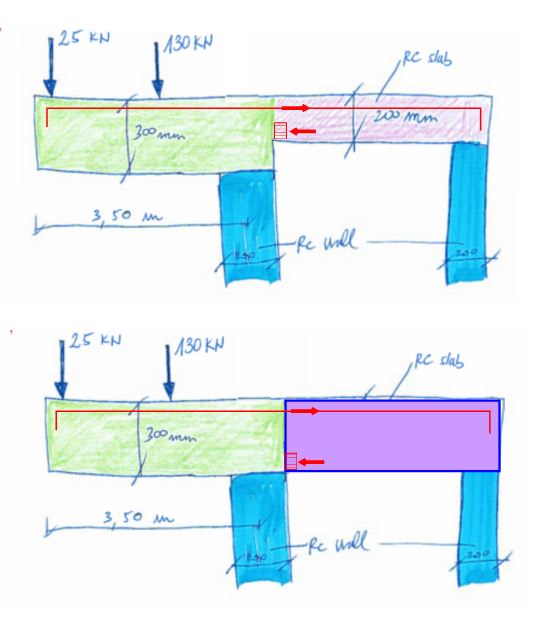
GREETINGS
I have heavily loaded RC slab (design load is 25 kN/m2). Slab is also additionaly loaded by two point loads (steel columns that are anchored in a slab). One acting on a free edge and the other one not that far away.
The span of a free edge is 4,80 m. The contractor suggested to make a part of RC slab 300 mm thick (istead of 200) to avoid formwork for beams(I suggested 2 RC beams instead that are partly integrated in a slab and support steel columns - point loads).
Any experience with this kind of stuff.
I already controled RC slab for capacity and deflections and it seems OK, but it feels off to me.
Whats your opionion?

![[idea] [idea] [idea]](/data/assets/smilies/idea.gif)



